Current Research
Evaluating The Effect of Borrelia Burgdorferi Infection on Nymphal Blacklegged Tick Host-Seeking Behavior
People: Michelle Volk1 (Ph.D. student), Sammy Schofield2, Jean Tsao1,3 (lead PI), Nelle Couret2
Units and Partners: 1. Department of Fisheries and Wildlife, Michigan State University, 2. Department of Biological and Environmental Sciences, University of Rhode Island, 3. Department of Large Animal and Clinical Sciences, Michigan State University
Duration: 2021 - present
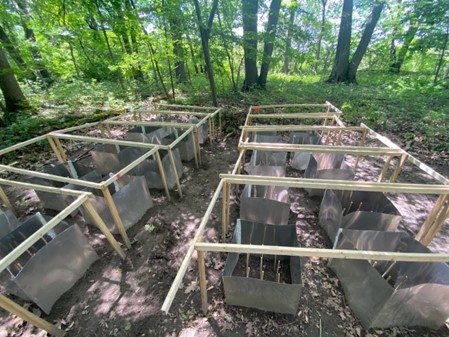
Description: Borrelia burgdorferi sensu stricto, the bacterial agent of Lyme disease in North America, is maintained by transmission between wildlife host and blacklegged tick (Ixodes scapularis) populations in a complex enzootic cycle. While highly pathogenic in humans and companion animals, B. burgdorferi is not considered a pathogen in ticks or wildlife hosts and can instead be conceptualized as a facultative mutualist that may confer survival advantages by mediating host traits such as behavior. Because B. burgdorferi transmission depends on the ability of a tick to successfully attach to and feed from a host, host-seeking behavior is a crucial aspect of the transmission cycle. Blacklegged ticks spend majority of lives off-host in the leaf litter and low-lying vegetation and are thus subjected to abiotic environmental conditions such as temperature and humidity, which can result in a decrease or cessation of host-seeking behavior with implications for the success of B. burgdorferi transmission.
This research aims to empirically estimate the effect of B. burgdorferi infection on tick life-history traits, specifically host-seeking behaviors, to compare phenotypic traits that are involved in enzootic transmission. We hypothesized that ticks infected with B. burgdorferi would display more active host-seeking behavior, thus suggesting a fitness advantage conferred to infected ticks to increase the likelihood of transmission. To study the effect of B. burgdorferi infection on trait variation, we characterized the behavior patterns of individually marked infected and uninfected nymphal blacklegged ticks by tracking activity and questing patterns on a coordinate system in natural environmental conditions over a 10-day period. The controlled experiments were conducted at the Corey Marsh Ecological Research Center within forested patches that are suitable habitat for Ixodes scapularis. The study of B. burgdorferi transmission dynamics will increase our knowledge of host-pathogen interactions in complex disease systems, and in particular the role of vectors in influencing transmission. This research will further our knowledge of the ecology and the emergence of Lyme disease, thus increasing our understanding of disease risk.
Wild Rice Growth Study
Undergraduate Students: Kailee Pearson, Jordan Zapata, Maggie Dobry
Mentor(s): Jennifer Owen, Matt Chansler
Units/Partners: MSU Dept. of Fisheries and Wildlife, MSU Dept. of Plant, Soil, and Microbial Sciences
Funding Sources: CANR Undergraduate Research Program, Society for Ecological Restoration, Private Donors
Timeline: 2022 to present
Description: Wild rice (Zizania aquatica) is a grass native to wetlands of the Great Lakes Region. Being native, the plant has existed with all the plants and animals around it for thousands of years. Wild rice is ecologically and culturally important, creating habitat for wildlife and food for people. The wild rice project at Corey Marsh Ecological Research Center is a study on the environmental conditions affecting the growth of wild rice in the marsh. Started by undergraduate student and member of the Sault Ste. Marie Tribe of Chippewa Indians Kailee Pearson in 2022, this project is a continuation of her work with the Sault Tribe Wildlife Program as a field technician. Before the project was initiated, there was no wild rice growing in the Corey Marsh. During the first year, Kailee correctly predicted that the marsh’s muck soils would provide the perfect conditions for wild rice growth but observed that rice don’t survive large fluctuations in water level or major herbivory. In year 2, the project had wild rice growing in four plots, each with a section that allows and excludes herbivory using wire fencing. We know the rice is sensitive, and it usually disappears when a wetland is disturbed by pollution or draining. Therefore, in 2023 environmental conditions including soil quality and water depth were measured, as well as growth, to determine a relationship between these factors. In 2024, our primary focus has been on improving herbivory exclosures. As the rice continues to grow and we learn more, we hope to understand how marsh conditions affect the growth of the rice, and how the rice affects the health of the marsh.
Hydrology of Corey Marsh
Undergraduate Student(s): Maggie Dobry
Mentor(s): Alex Kuhl, Sherry Martin
Units/Partners: MSU Institute of Water Research, US Geological Survey, MSU Department of Earth and Environmental Science
Funding Sources: CANR Undergraduate Research Program, Private Donors
Timeline: 2024 to present
Description: For over 70 years, the MSU land now known as Corey Marsh Ecological Research Center (CMERC) operated as an experimental agricultural station. During this time, the land was exposed to different chemicals and drainage tiles were installed in an attempt to control water saturation in crop fields. Little is known about the impacts of this long-term agricultural history on current hydrological characteristics at Corey Marsh. This study aims to characterize water balance, water quality, and soil quality at sites across the CMERC property and at neighboring Michigan DNR land. These data will provide vitally important baseline information to inform future research and wetland restoration efforts at CMERC.
Seasonal Wildlife Use of Muskrat Lodges
PI: Brett DeGregorio, Unit Leader, Michigan Cooperative Fish and Wildlife Research Unit
Funding Source: US Geological Survey
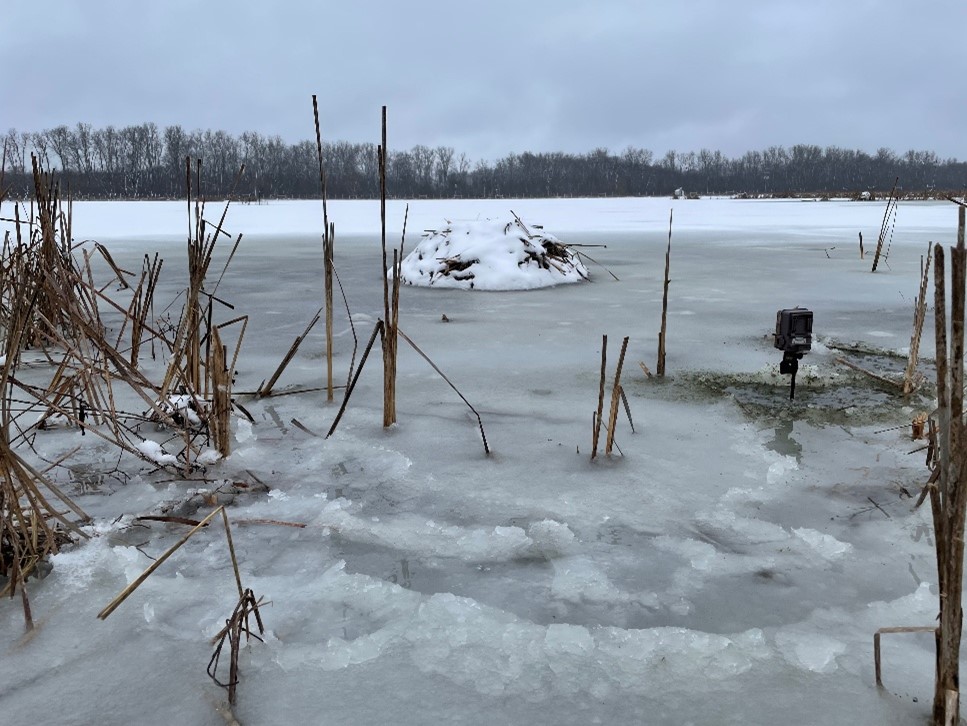
Description: Muskrats (Ondatra zibethicus) are medium-sized semi-aquatic rodents found throughout much of the United States, although evidence indicates that their populations in many regions are declining. These declines are concerning because muskrats play a vital role in the health of the wetlands by acting as ecosystem engineers, organisms that change the availability of resources within an environment. Many wetland inhabitants, such as marsh birds and semi-aquatic turtles, rely on muskrats to modify vegetation density. Muskrats also build large lodges or mounds or huts in their home wetlands that look like rounded pyramids of vegetation and mud sticking up out of the water. Muskrats use these lodges for shelter, particularly during the winter months. These lodges are important structures within wetlands and are used by numerous other species. Here, our goal is to use camera traps to document the wide variety of wildlife that use these mounds and to document how use varies seasonally. These results will further highlight the importance of the underappreciated muskrat in the marsh ecosystem.
CMERC Wildlife Monitoring Project
Undergraduate Students: Riley Korus, Gray Longcore, Molli Thibodeau
Mentors: Rose Stewart, Jennifer Owen
Units/Collaborators: MSU Department of Fisheries and Wildlife (Hailey Boone, Steven Gurney), Michigan Cooperative Fish and Wildlife Research Unit (Brett DeGregorio)
Funding Sources: MSU Extension, CANR Teaching and Learning Education funds, Glassen Foundation
Timeline: 2023 to present
Description: We have initiated a wildlife monitoring survey using trail cameras to document mammalian presence and activity at CMERC. During summer 2023, a standardized array of 17 cameras (separated by ~300m) was deployed across the property. These motion-triggered cameras operate year-round and are equipped to take images day and night. Images are being collected and reviewed to characterize the mammalian population at CMERC, providing critical baseline information for future research activities.
Already, this project has led to an ongoing, complementary camera trapping study led by Brett DeGregorio (Unit Leader for the Michigan Cooperative Fish and Wildlife Research Unit) for Snapshot USA. This effort also serves as a platform for training students in field-based research techniques, science communication, and public engagement.
White-tailed Deer Fawn Movement at CMERC
Undergraduate Students: Makayla Dernberger
Mentor(s): Sonja Christensen
Units/Partners: MSU Dept. of Fisheries and Wildlife
Funding Sources: Glassen Foundation
Timeline: 2024 to present
Description: This project aims to evaluate white-tailed deer fawn survival rates and post-capture fawn behavior at CMERC. To do this research, we briefly captured neonate fawns to place a radio collar and then employed radio telemetry to track their movements within Corey Marsh and surrounding areas. Concurrent vegetation surveys are being conducted to characterize habitat types in areas were fawns were found. The goal of this research is to better understand how fawns utilize their space as part of broader research focused on deer disease ecology.
Cavity Nesting Bird Demography Study
Undergraduate Students: Hannah Landwerlen, Evan Griffis, Kelly Baltusis, Kelly Craig, Endi Piovesana, Anna Dunnebacke, Gray Longcore, Molli Thibodeau
Mentor(s): Jennifer Owen
Units/Collaborators: MSU Department of Fisheries and Wildlife, MSU Department of Entomology
Funding Sources: CANR Undergraduate Research Program, Glassen Foundation, MSU AgBioResearch, Glassen Undergraduate Experience, Michigan Bluebird Society, Private Donors
Timeline: 2020 to present
Description: Monotypic vegetation is increasingly prevalent in natural communities due to agricultural activities and the introduction of non-native species. Currently, the open prairie habitat at Corey Marsh Ecological Research Center is dominated by invasive reed canary grass (Phalaris arundinacea). Eastern Bluebirds and Tree Swallows depend on these open fields and prairies to forage for insects, and invertebrates decrease in diversity when vegetation diversity decreases. When fewer distinct prey species are available for bluebirds and swallows in habitats dominated by non-native plant species, there can be major impacts on breeding and nestling health. We are conducting a long-term demography study of these prairie species (EABL and TRES) in relation to wetland and prairie restoration research at CMERC. We are monitoring reproductive success and survival of these indicator species, as well as physiological and nutritional condition through blood sampling of both adults and nestlings. Results from this study will inform managers on the impacts of monotypic vegetation stands on avian health and fitness.
Herpetofauna Monitoring (Herp Team)
Undergraduate/Graduate Students: A Proudfoot, Endi Piovesana, Maggie Haite, Gia Haddock, Quinn Bozek, Riley Korus
Mentor(s): Alexa Warwick, Yu Man Lee
Units/Collaborators: MSU Department of Fisheries and Wildlife, Michigan Natural Features Inventory
Funding Sources: CANR Teaching and Learning Education funds, NSF DUE award #1914722, US Fish and Wildlife Service, MSU Extension
Timeline: 2021 - present
Description: Long-term monitoring of organisms is an important way to track changes over time in the species present in an area. We are collaborating with staff from the Michigan Natural Features Inventory to characterize herpetofauna (amphibians and reptiles) at Corey Marsh. Beyond simply knowing which species inhabit an area, tracking the same individuals over time also informs our understanding of population demographics. Because amphibians especially are often very sensitive to environmental changes, they can be important indicator species to monitor. Our project goals are to develop a comprehensive herpetology-focused monitoring effort at Corey Marsh that can then serve as an exemplar site to be replicated and implemented elsewhere, with data-sharing across sites to generate larger datasets. The current sampling methods include: (1) salamander mark-recapture using wooden cover boards, with a focus on the red-backed salamander (partnering with SPARCnet), (2) turtle mark-recapture using hoop traps, (3) frog and toad acoustic call monitoring using both manual surveying and passive frog logger devices, and (4) use of environmental DNA (eDNA) to detect reptiles and amphibians. Undergraduate and graduate students are actively involved and even leading some of these herpetology sampling efforts through both independent and course-based research.
Michigan State Bird Observatory
Units/Collaborators: MSU Departments of Fisheries and Wildlife
Funding Sources: Private Donors, Michigan Department of Natural Resources, MSU AgBioResearch
Timeline: 2013 to present (Corey Marsh Banding Station opened in 2019)
Description: The Michigan State Bird Observatory (MSBO) is an umbrella organization that encompasses bird banding, education, and outreach activities at two locations: the Burke Lake Banding Station and the Corey Marsh Banding Station. The mission of MSBO is to integrate research, train future natural resource professionals, and provide education and outreach for people of all ages – while also promoting the protection and conservation of migratory birds and their habitats. We are particularly interested in the health of migratory birds relative to habitat quality.
Place-Based Conservation Theater Project
Undergraduate Student(s): Ben Eiler
Mentor(s): Emily Pomeranz, Rob Roznowski, Garth Sabo
Units/Collaborators: MSU Departments of Fisheries and Wildlife, MSU Department of Theater, MSU CIRCLE
Funding Sources: MSU CIRCLE, CANR Undergraduate Research Program
Timeline: 2024 to present
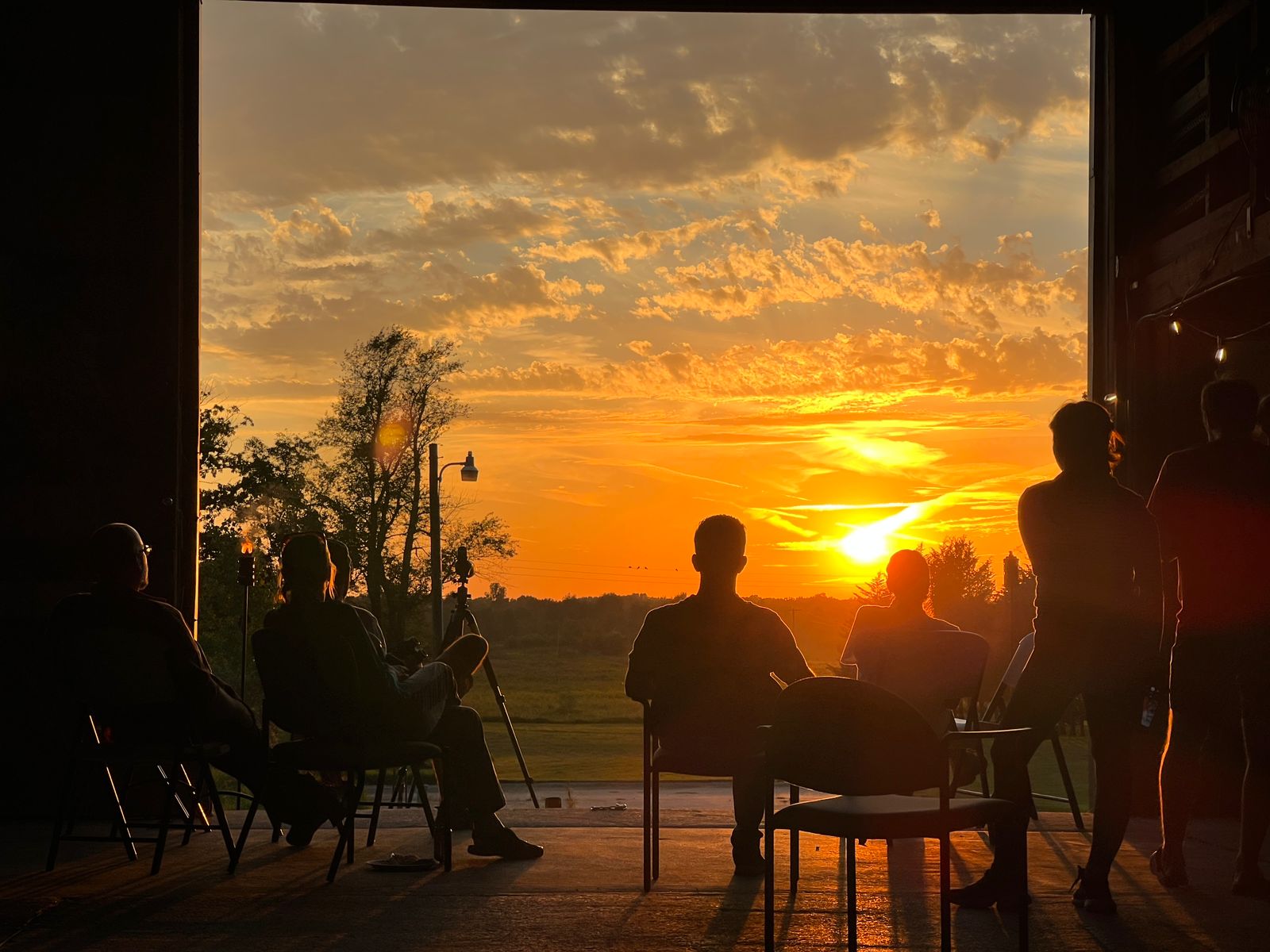
Description: This summer, we are working with a group of 3 MSU student artists (a script writer, a director, and a set designer) to create a place-based theatrical piece that reflects the themes of conservation, ecology, and land use at CMERC and will be performed at the marsh in fall 2024. We are learning about these concepts through a series workshops help at the marsh in which we are meeting with over 20 scientists, community members, and conservation practitioners. Throughout this process, we will be researching the impact of this collaborative work with two goals in mind. First, is to better understand how creating, contributing to, and viewing this work respectively impacts the artists, scientists/stakeholders, and audience members involved; second, is to create a toolkit that can be used by science educators, conservationists, and other theater artists to facilitate similar collaborations in different environments.
Secretive Marsh Bird Demography Study
Undergraduate Students: Hannah Landwerlen, Evan Griffis, Kelly Baltusis, Kelly Craig, Endi Piovesana, Anna Dunnebacke, Gray Longcore, Molli Thibodeau
Mentor(s): Jennifer Owen
Units/Partners: MSU Department of Fisheries and Wildlife
Funding Sources: CANR Undergraduate Research Program, MSU AgBioResearch, Glassen Undergraduate Experience, Private Donors
Timeline: 2020 to present
Description: Secretive marsh birds are important indicators of the health of emergent vegetated wetland ecosystems and are state-listed species of concern in most of the states in which they breed, including in Michigan. Populations have declined with the loss and degradation of wetlands, primarily through the expansion of agricultural activities and draining of land for growing crops. Additionally, secretive marsh birds are sensitive to invasion of non-native species, particularly Virginia rails whose abundance is negatively associated with presence of monotypic reed canary grass. We are conducting a long-term demography study of these marsh species (VIRA and SORA) in relation to wetland and prairie restoration research at Corey Marsh Ecological Research Center. We are monitoring reproductive success and survival of these indicator species, examining (1) the availability of food through arthropod sampling, and (2) the birds’ diet through opportunistic fecal sampling. Results from this study will inform managers on the impacts of monotypic vegetation stands on avian health and fitness.
Sedge Wren Ecology Study
Undergraduate Students: Trevor Markwood, Anna Dunnebacke, Gray Longcore, Molli Thibodeau
Mentor(s): Jennifer Owen, Melissa Charenko
Units/Partners: MSU Department of Fisheries and Wildlife, MSU Lyman Briggs College
Funding Sources: MSU Lyman Briggs Undergraduate Research Support, CANR Undergraduate Research Program, Glassen Foundation
Timeline: 2023-present
Description: Sedge wrens (Cistothorus stellaris) are small brown songbirds known for being a nomadic species, meaning they typically end up in different locations every year when they migrate. As a result, there can be a multitude of sedge wrens in an area one year, but the next year there could be none. Interestingly, Corey Marsh Ecological Research Center has been home to a plethora of sedge wrens every year for the past several years, and we are trying to determine what factors may be attracting them to this habitat. To better understand sedge wren ecology, we are conducting ground surveys to map out sedge wren territories. We also plan to conduct nest surveys to locate their nests and characterize nest composition, surrounding vegetation coverage, and other important factors. Our intent with this research is to discover why sedge wrens love Corey Marsh so much and what factors cause them to return every year. This information will allow for further research to investigate how sedge wrens affect the marsh and how the marsh benefits these birds.
Survey of Historical Pesticide Use
Undergraduate Students: Sofie Johnson
Mentors: Melissa Charenko, Jennifer Owen
Units/Partners: MSU Lyman Briggs College, MSU Dept. of Fisheries and Wildlife
Funding Sources: MSU Lyman Briggs Undergraduate Research Support, MSU Extension
Timeline: 2023 (currently seeking undergraduate researcher to continue this project)
Description: The MSU Muck Soils Research Farm (MSRF) operated on the site of the current Corey Marsh Ecological Research Center from 1941 to 2012. We are interested in the history of pesticide and fertilizer use at the MSRF during its 70 years in operation and how these activities may impact soil conditions today. Undergraduate students are conducting a survey of chemical use by reviewing historic journals kept by the farm managers between 1970 and 1985 as well as the annual reports produced by the farm. Once students determine which areas of the property were most heavily affected, a soil analysis will be done to compare soil characteristics at different locations. This research is important to help get an understanding of possible legacy chemicals that could still be present in the soil today. The analysis will help researchers determine future actions that can be taken to restore and rehabilitate the site to its natural state.
Fish Monitoring Program at CMERC
Undergraduate Students: Griffin Bartscht
Mentor(s): Brian Roth
Units/Collaborators: MSU Department of Fisheries and Wildlife
Funding Sources: CANR Undergraduate Research Program, Glassen Undergraduate Experience
Timeline: 2023 (currently seeking undergraduate researcher to continue this project)
Description: We began a fish monitoring program in summer 2023 to characterize the presence, size, and health of fish species inhabiting Corey Marsh. We have very little knowledge about species diversity, population sizes, presence of invasive/nonnative fish species, or the presence of species of conservation concern in the area. We are also testing different trapping techniques to maximize the efficiency of our surveys. We have found that most fish appear to be entering Corey Marsh from Burke Lake located on the MI DNR Rose Lake State Wildlife Area and intend to do parallel surveys at that location for comparison. This project will increase our understanding of the local fish community and provide baseline data for future research studies.



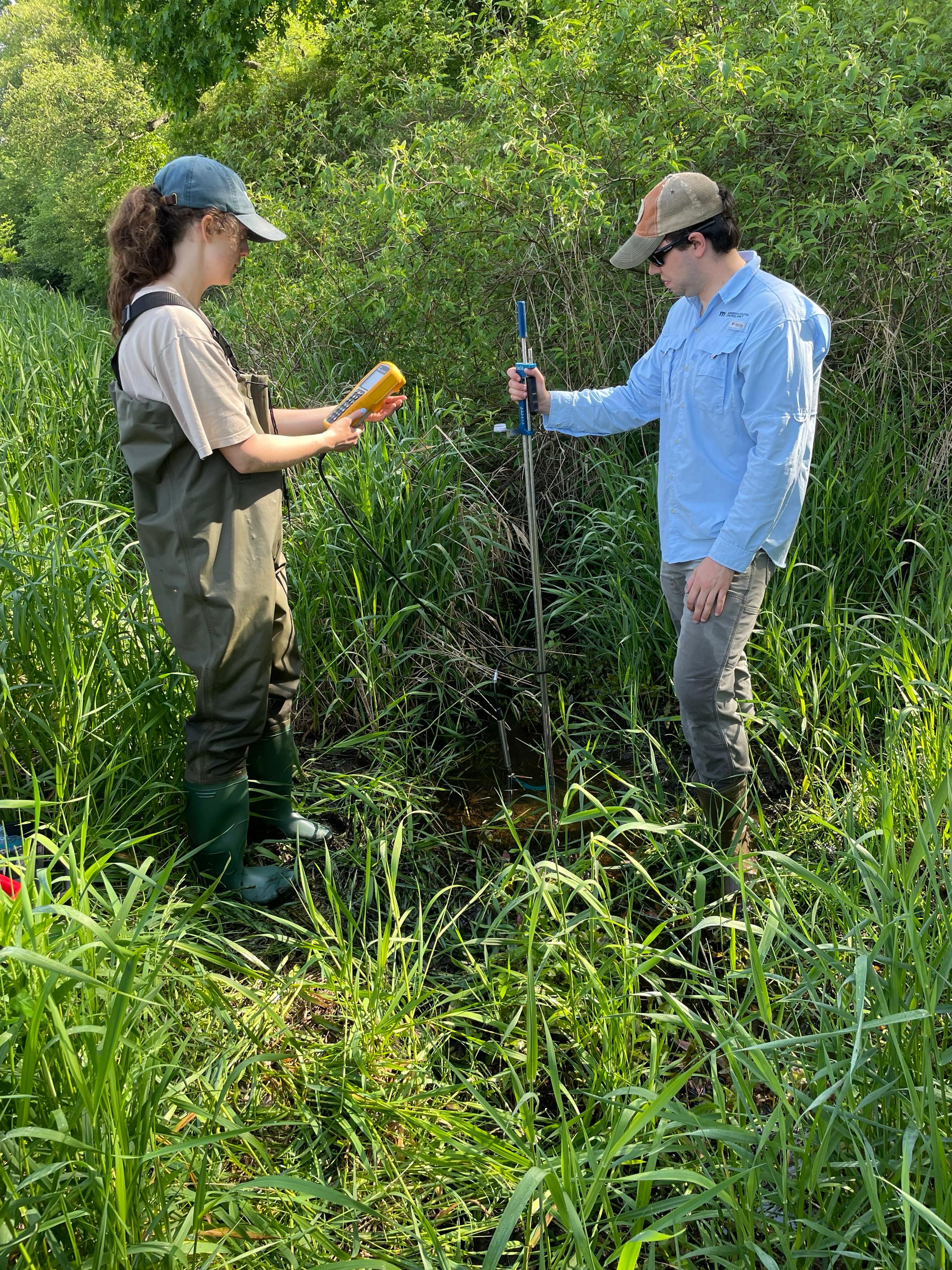

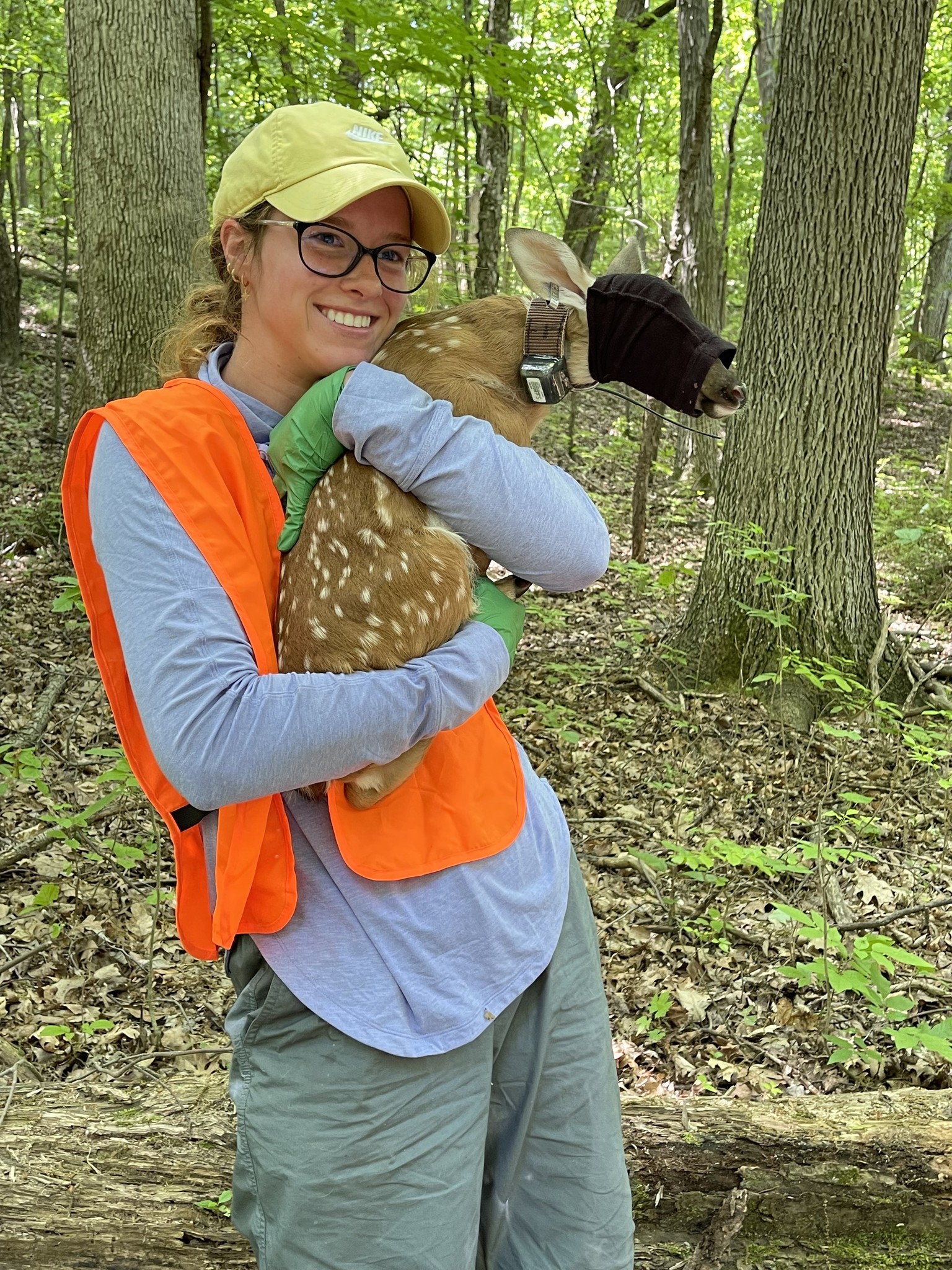
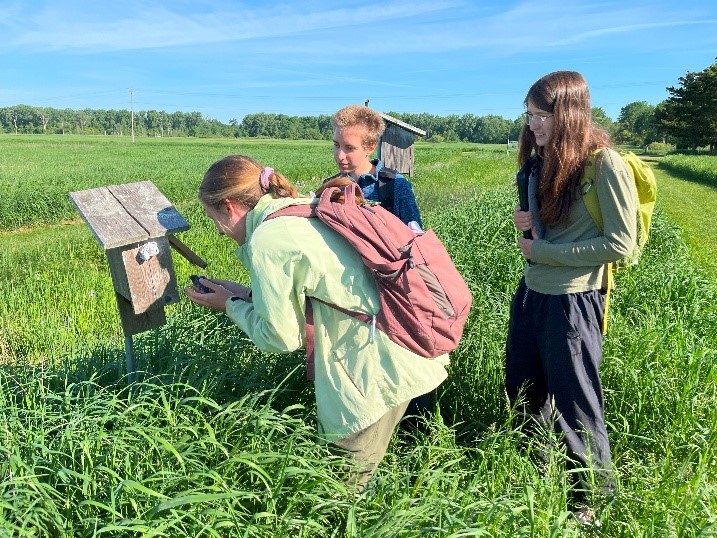
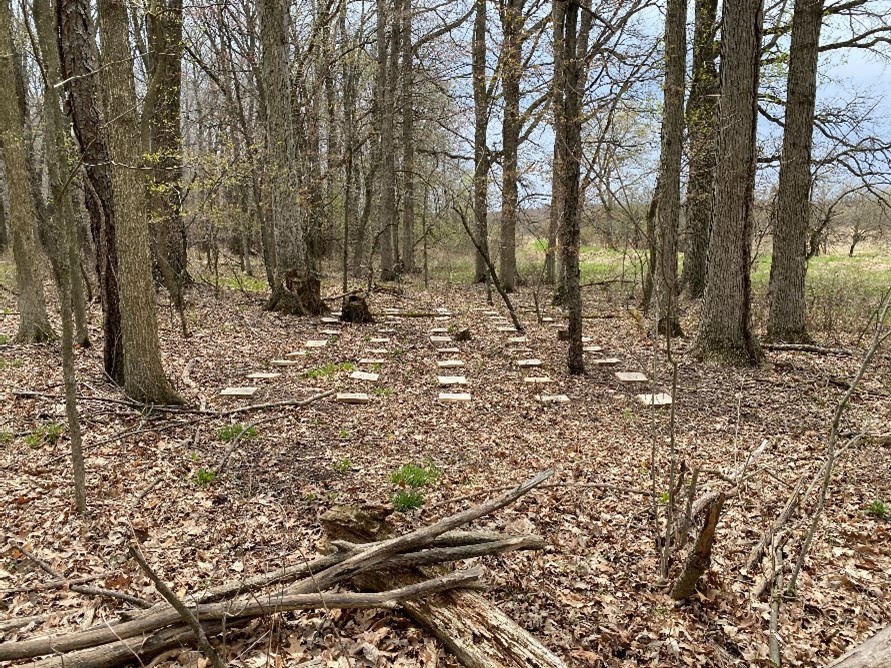
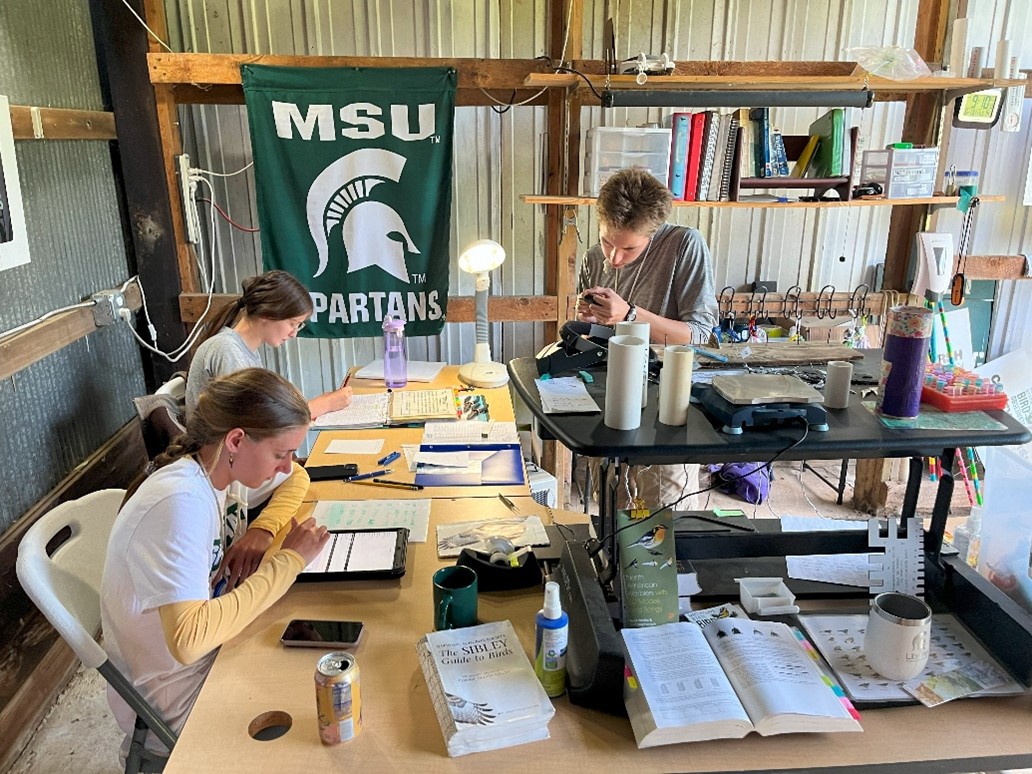

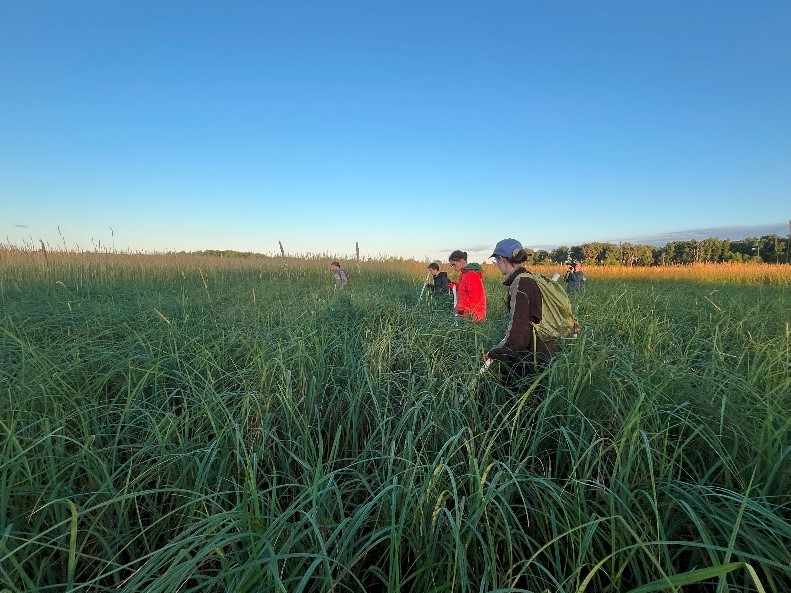
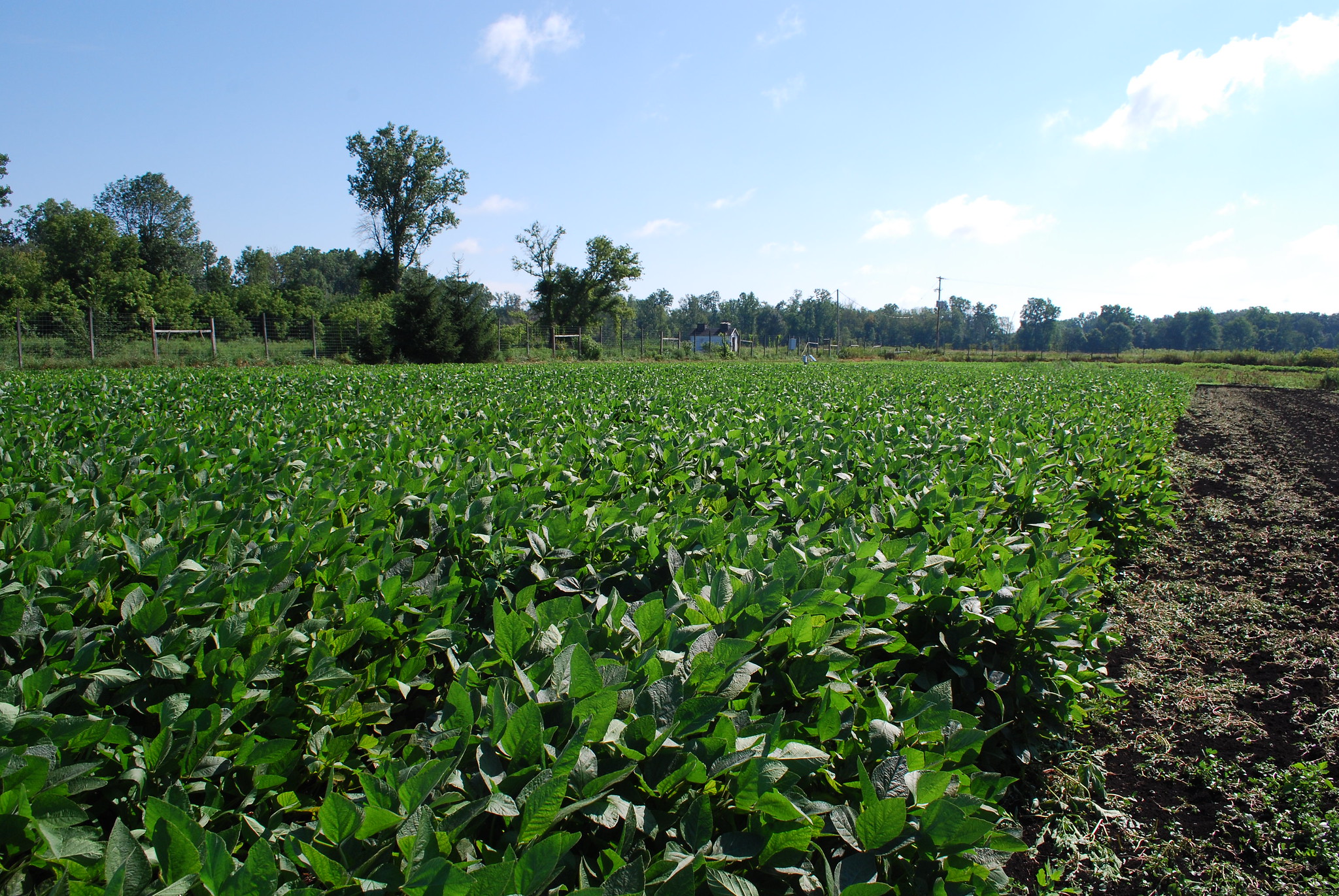
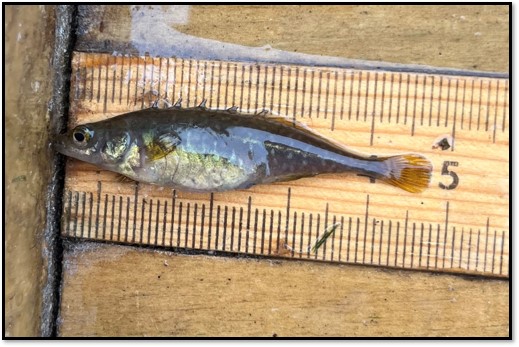
 Print
Print Email
Email